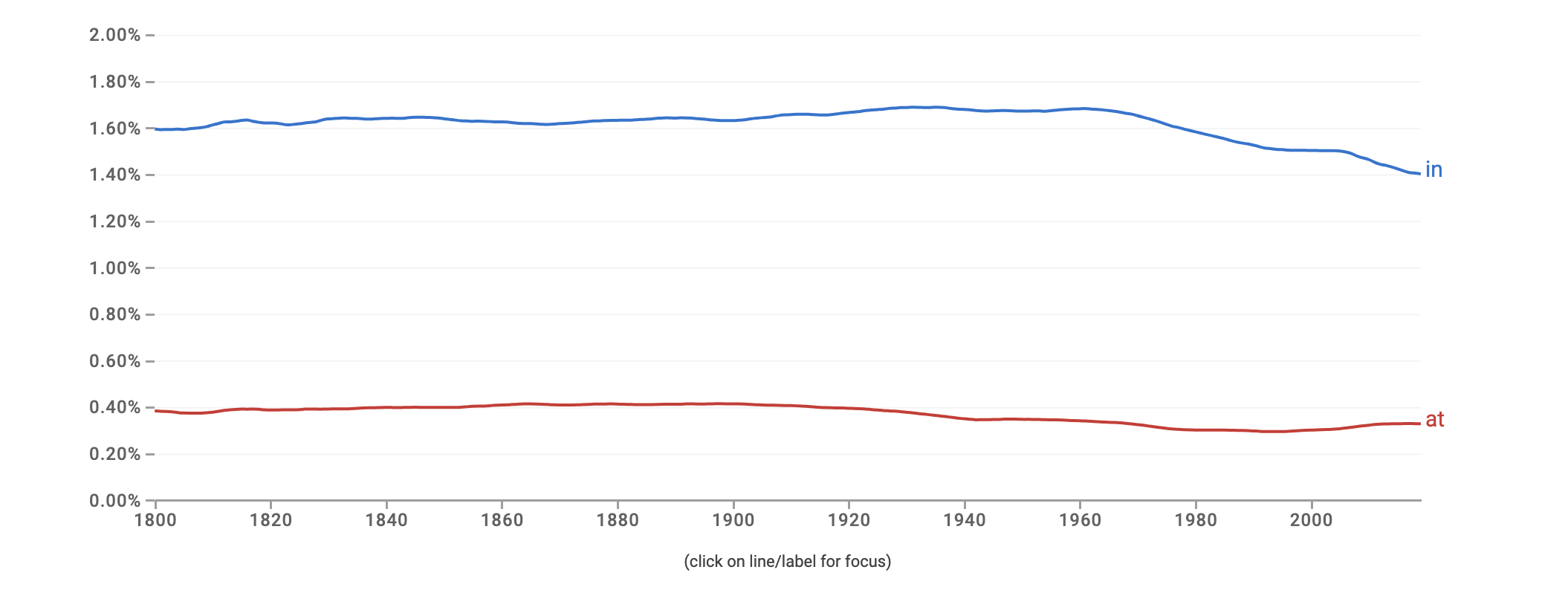- "In" is a preposition that denotes location within a space or enclosure. It is used to specify a position or inclusion within a particular area, time, or circumstance.
- "At" is a preposition indicating a specific point, location, or time. It is used to pinpoint a precise spot, address, moment, or event in various contexts.
In this sentence, "in" is used as a preposition indicating the location or setting where something exists or takes place. Specifically, it describes the serene countryside where the quaint cottage is situated, surrounded by rolling hills and lush greenery.
🏠 At the edge of the countryside, a charming farmhouse stands proudly, offering a picturesque view of golden fields and a babbling brook, creating an idyllic atmosphere that captures the essence of rural tranquility.
In this sentence, "at" is used as a preposition indicating a specific point or location. It specifies the position of the charming farmhouse, which stands proudly at the edge of the countryside, offering a picturesque view of the surrounding golden fields and babbling brook.
Ah, the humble preposition. Those little words that sneak into our sentences and sometimes trip us up. Two of the most notorious culprits are "in" and "at." Confusing, aren't they? Don't worry, you're not alone. Mastering these prepositions requires understanding their distinct roles.

When to use "in" and "at"
Time
Use "at" for specific points in time:
- Exact times: "I'll meet you at 3:00 PM."
- Holidays without "day": "We celebrate Thanksgiving at sunrise."
- Specific moments: "He smiled at her first glance."
Use "in" for longer periods:
- Parts of the day: "I sleep in late on weekends."
- Seasons: "Spring is in the air!"
- Years: "I met my best friend in 2010."
Place
Use "in" for large, enclosed spaces:
- Countries: "I'm living in Spain for a year."
- Buildings: "The book is in the library."
- Vehicles: "I'm sitting in the car."
Use "at" for specific locations within a larger space:
- Addresses: "The party is at 123 Main Street."
- Points on a map: "The treasure is buried at the X."
- Precise locations: "Sit at the corner of the table."
Examples from the web
In
"Let us know in the comments section below." - The New York Times
"I was born in Shanghai in 1940." - The New York Times
At
"There is a lot at stake." - The New York Times - Food
"Look at him!" - The Guardian
Usage of in vs. at
Examining the graph below, we can see that "in" is used more than "at."

Synonyms/Related Phrases
In
- Within
- Inside
- Within the bounds of
- Amidst
- Surrounded by
- During
- Among
- Enclosed by
- Located in
- Throughout
At
- On
- Near
- By
- Positioned at
- Close to
- Adjacent to
- Alongside
- At the location of
- At the side of
- At the point of
FAQ
Which is correct "live in" or "live at?"
The choice between "live in" and "live at" depends on context. Use "live in" when referring to a city, country, or general location, and use "live at" when specifying a precise address or a specific place within a larger area.
Are you "at school" or are you "in school?"
Both are correct, but the choice depends on the context. Use "at school" when referring to the physical location, such as being on the school premises. Use "in school" when referring to enrollment or participation, emphasizing the educational institution itself rather than the physical location.
Summary
By mastering the distinctions between "in" and "at," you empower yourself to convey precise meanings in your writing. Whether navigating spatial relationships or pinpointing specific moments in time, a clear grasp of these prepositions enhances the clarity and effectiveness of your communication. So, the next time you find yourself at the crossroads of "in" and "at," navigate with confidence, armed with the knowledge of their nuanced usage.

Want to sound like a native speaker?
Engram’s AI-powered grammar checker makes your English sound like a native speaker’s, suggesting natural English expressions on top of fixing grammar, spelling, punctuation, word order, and vocabulary.

References:















